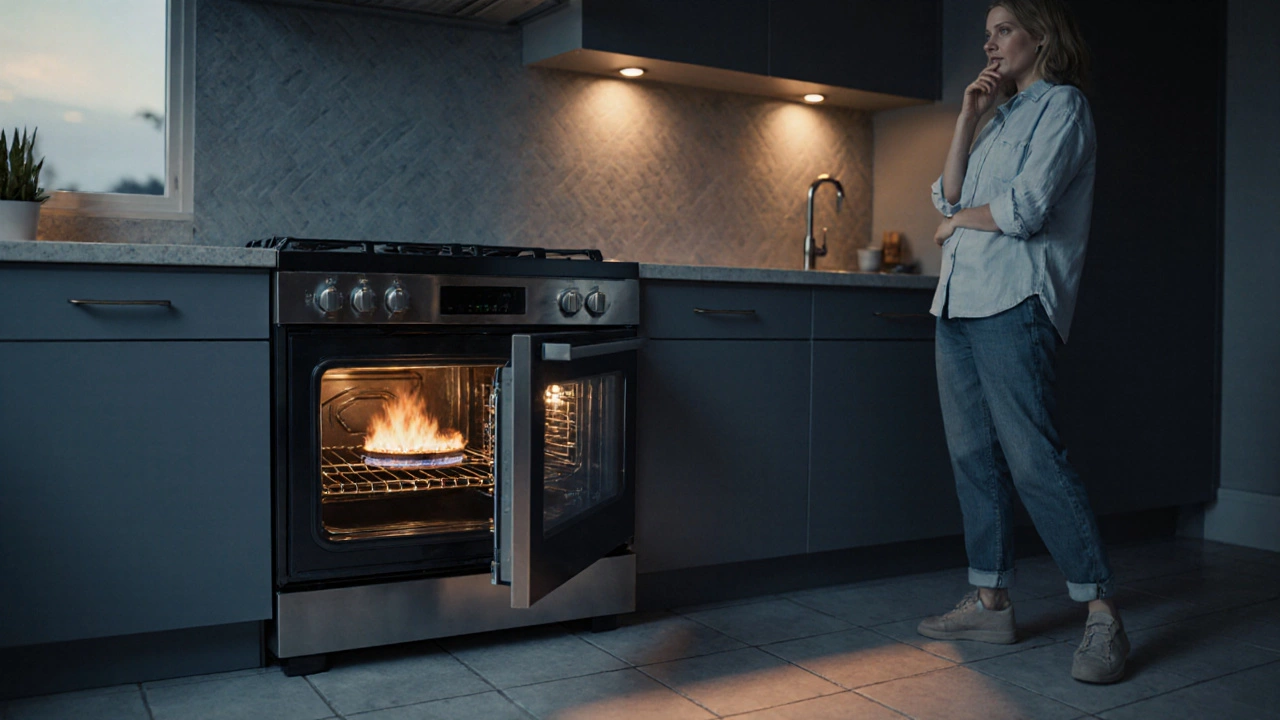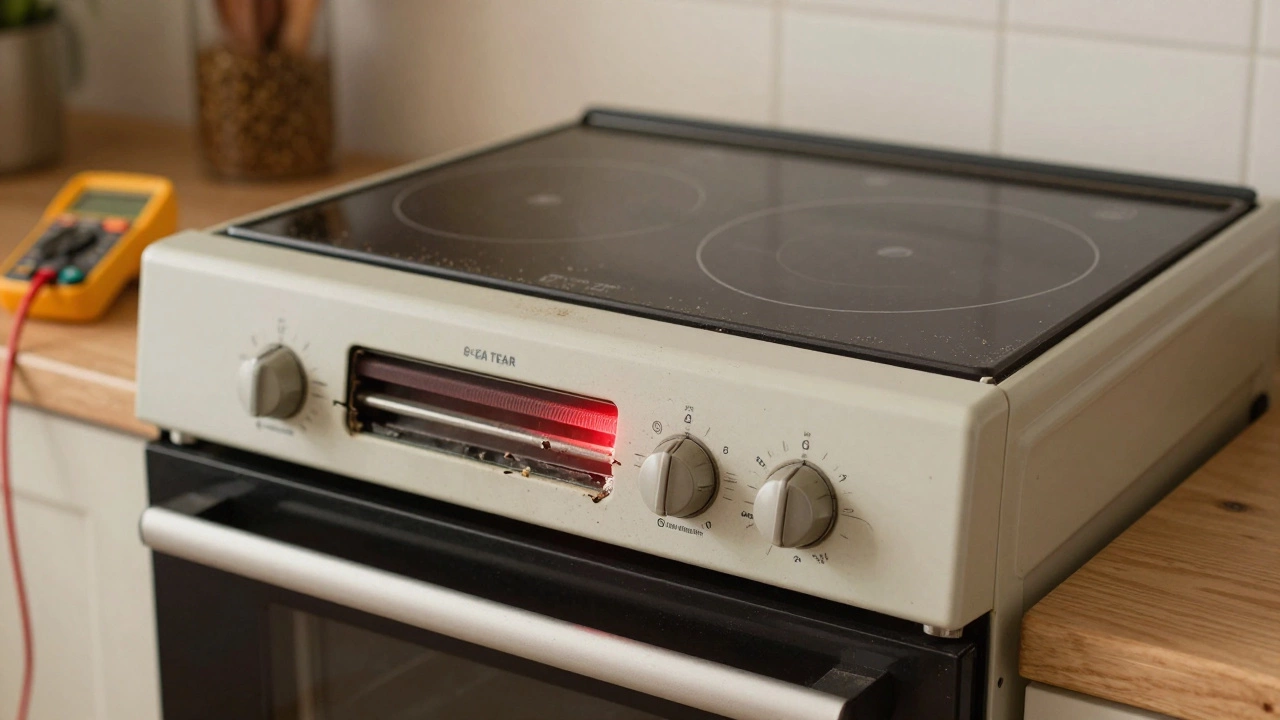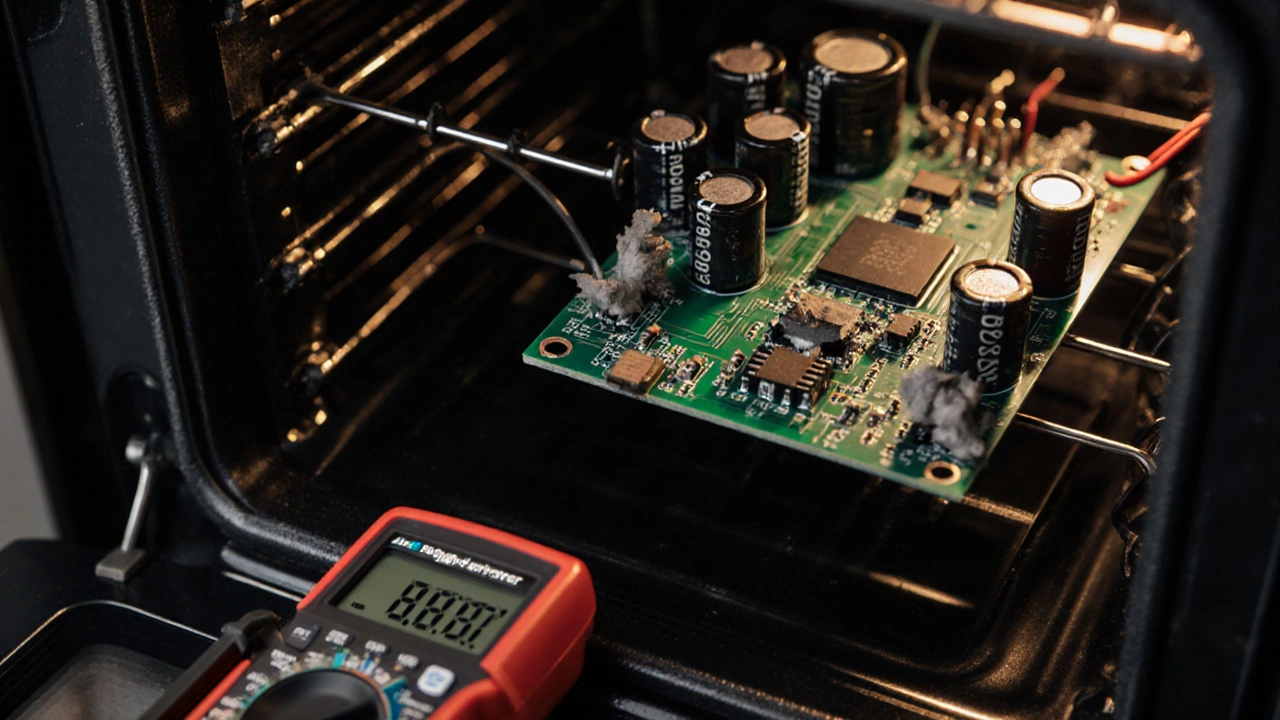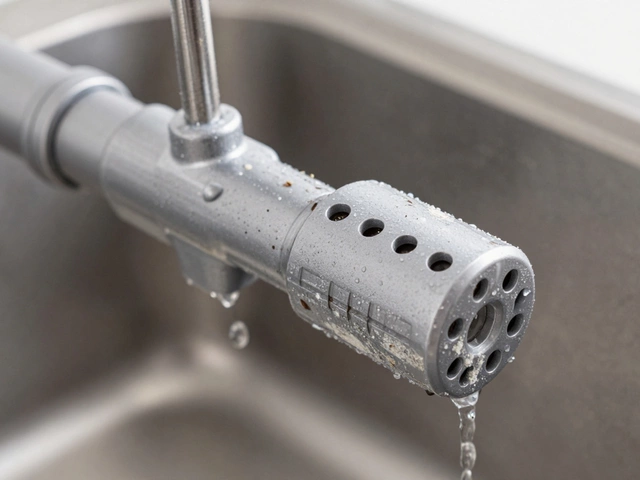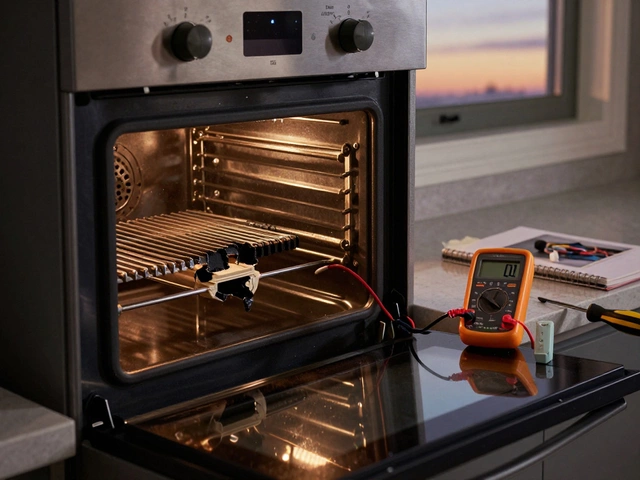Gas Oven Repair Cost Calculator
Select Your Oven Problem
Estimated Repair Costs
Wondering if a gas oven is something you can truly fix instead of tossing it out? The short answer is yes - most gas ovens can be repaired, but the road to a working appliance depends on the problem, your skill level, and safety considerations.
When it comes to gas oven repair, knowing what you’re dealing with makes the job a lot easier.
How a Gas Oven Works - Key Parts
At its core, a gas oven burns fuel to create heat, then circulates that heat to bake or roast. The process is controlled by a few critical components, each of which can fail over time.
The first component to meet is the ignition system is the device that lights the gas when you turn the oven on. Older models use a spark electrode, while newer ones may have a glow bar. If the spark is weak or the glow bar is burnt out, the oven simply won’t heat.
Next up are the burners are the metal tubes where gas mixes with air and ignites. Burners can become clogged with food debris or rust, causing uneven flames or a complete flame‑out.
The thermostat is the temperature sensor that tells the oven when to turn the gas on or off. A faulty thermostat leads to temperature swings, so your cake may be raw in the middle and burnt on the edges.
Safety isn’t an afterthought. The safety valve is a fail‑safe that shuts off gas flow if the flame goes out. If the valve sticks, you could have a gas leak - a risk you never want to take.
Even the oven door latch is a mechanical lock that keeps the door sealed during cooking. A broken latch can cause heat loss, making the oven work harder and wear out faster.
Modern ovens also rely on a control board is the electronic brain that coordinates ignition, timing, and safety features. When the board glitches, you might see error codes instead of heat.
Common Problems That Signal a Repair
- No heat at all. Usually an ignition or safety valve issue.
- Weak or uneven flames. Often a clogged burner or mis‑adjusted air‑gas mix.
- Temperature swings. The thermostat or control board is likely to blame.
- Kitchen filling with gas smell. Could be a faulty safety valve or loose gas line - stop using the oven immediately.
- Error codes on the display. These are the control board’s way of telling you what’s wrong; look up the code in the manual.
DIY Troubleshooting You Can Safely Try
- Verify the oven is receiving power and the gas supply is on. Check the circuit breaker and gas valve.
- Inspect the igniter or glow bar. A cracked ceramic igniter will glow faintly or not at all. If it’s damaged, replacement is inexpensive (NZ$30‑$70) and can be done with a screwdriver and a spare part.
- Clean the burners. Remove the burner caps, soak them in warm, soapy water, and use a soft brush to clear residue. Re‑assemble and test.
- Test the thermostat with a multimeter. Set it to “ohms” and compare the reading to the spec in your manual (usually around 10kΩ at room temperature). If it’s out of range, replace it.
- Look for gas leaks. Apply a soap‑water solution to the gas line and connection points; bubbles indicate a leak. If you spot any, turn off the gas supply and call a professional - do not attempt to patch it yourself.
- Reset the control board. Unplug the oven for five minutes, then plug it back in. This can clear minor electronic glitches.
These steps cover about 70% of typical faults. If the oven still won’t heat or you’re uncomfortable with any step, it’s time to bring in a qualified service technician is a certified professional who can diagnose and fix gas‑related appliance issues safely.
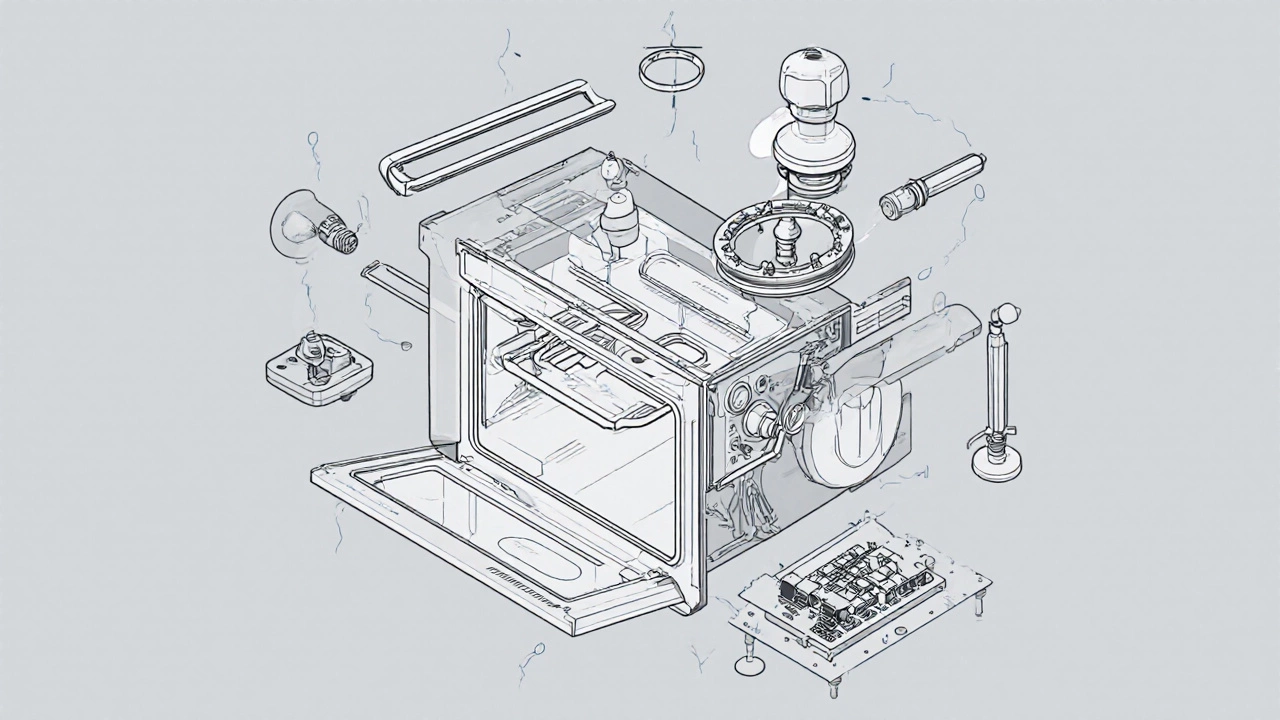
When to Call a Professional - Safety First
- Any sign of a gas leak. Even a faint smell warrants immediate professional attention.
- Repeated error codes after a reset. This usually points to a control board or sensor problem that needs specialized tools.
- Issues involving the gas line, regulator, or main valve. Those components are regulated and require licensed work in New Zealand.
- Warranty still active. DIY work can void manufacturer coverage, so check the terms before opening the oven.
- Complex electronic failures. Modern ovens use proprietary boards; an unqualified repair can cause more damage.
Choosing a licensed technician who specialises in gas appliances protects you from liability and ensures the repair meets New Zealand’s gas safety standards.
Cost Expectations and Repair‑vs‑Replace Decision
Repair costs vary widely based on the part and labour. Below is a quick snapshot of typical price ranges in Auckland (2025 figures):
| Repair Type | DIY Cost (NZ$) | Professional Cost (NZ$) | Time Required |
|---|---|---|---|
| Igniter replacement | 30‑70 (parts only) | 120‑180 (parts + labour) | 30min |
| Burner cleaning | 0‑15 (cleaning supplies) | 80‑130 (service call) | 45min |
| Thermostat swap | 40‑90 (part) | 150‑220 (labour) | 1hour |
| Control board repair | - (not DIY) | 250‑400 (board + install) | 2‑3hours |
| Gas valve leak fix | - (illegal DIY) | 180‑300 (licensed gasfitter) | 1‑2hours |
When the total repair bill exceeds half the price of a new mid‑range gas oven (around NZ$2,000 in 2025), many owners choose to replace. However, if the oven is relatively new or has premium features, repairing can extend its life by 5‑10 years.
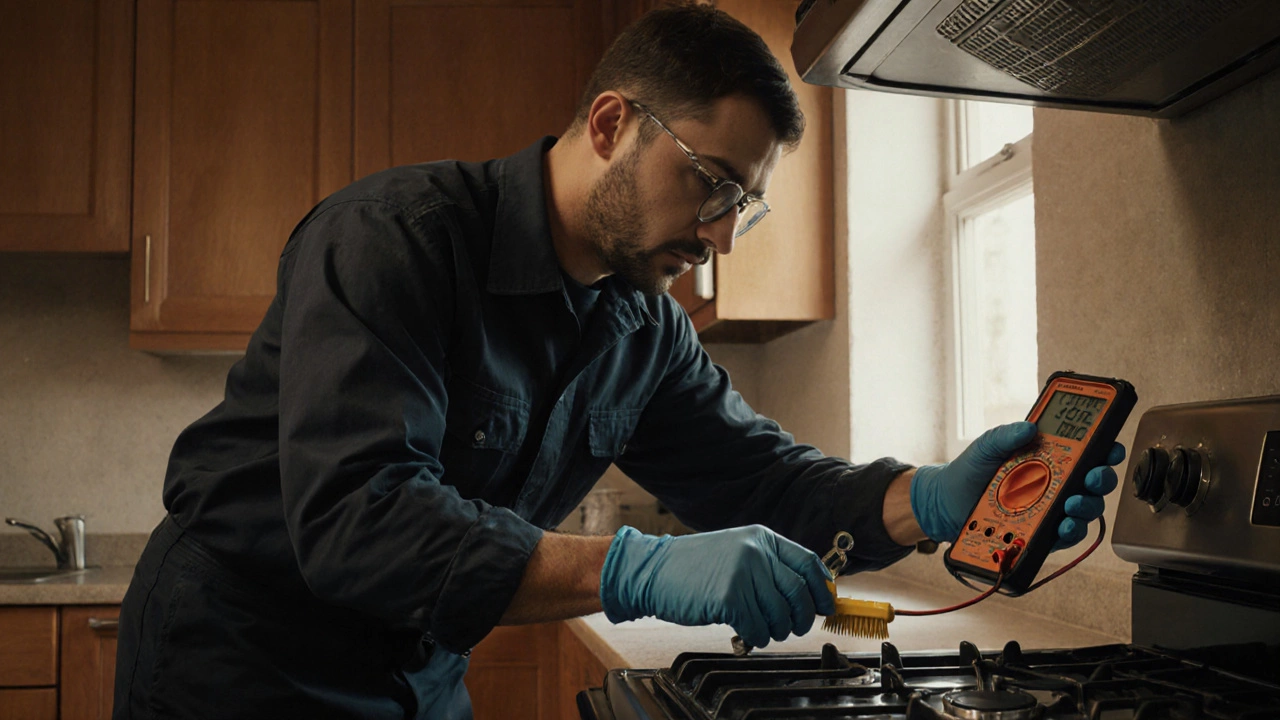
Choosing the Right Service Technician
Here’s a quick checklist to vet a potential repairer:
- Licensed gasfitter status with the New Zealand Gas Service.
- Insurance that covers accidental damage.
- Positive reviews on local platforms (e.g., TradeMe, Google).
- Clear, written estimate that separates parts and labour.
- Warranty on the repair work (at least 12months is standard).
Ask the technician if they can provide a written safety inspection after the repair. A thorough check ensures the oven complies with the latest safety codes and gives you peace of mind.
Quick Repair Checklist
- Turn off gas supply and disconnect power before any inspection.
- Check igniter / glow bar for cracks.
- Clean burners and verify flame pattern.
- Test thermostat resistance.
- Inspect safety valve for proper shut‑off.
- Reset control board by unplugging for 5minutes.
- If any gas leak is detected, stop and call a licensed professional.
Frequently Asked Questions
Can I replace the igniter in a gas oven myself?
Yes, if the oven is unplugged and the gas valve is closed. The igniter is usually held in place with a couple of screws. Remove the old part, connect the new one, and re‑assemble. Test the oven after a five‑minute power reset. If the igniter still won’t spark, the issue may be the control board.
What smells like gas after I’ve cooked?
A lingering odor often means the safety valve didn’t close after the flame went out. Turn off the oven, open windows, and contact a licensed gasfitter immediately. Do not try to light the oven or use open flames.
Is it worth repairing an old gas oven?
If the oven is less than ten years old and the repair is under NZ$300, most experts recommend fixing it. Older models may lack energy‑efficient features, so weigh the repair cost against the savings from a newer, convection‑enabled oven.
How often should I have my gas oven serviced?
A professional safety inspection every 2‑3years is a good rule of thumb. Regular cleaning of burners and checking for gas smells prolongs the life of the appliance.
Can a faulty door latch cause heating problems?
Yes. If the latch doesn’t seal, heat escapes, causing the thermostat to work harder and sometimes overheat. Replacing the latch is a cheap DIY fix (usually NZ$20‑$40).
